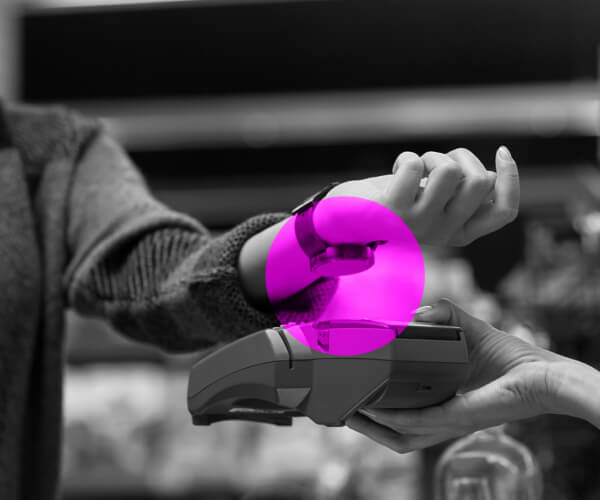COVID not only accelerated online purchases, alcohol delivery and Zoom everything – it may have brought life back to the QR code. With the pandemic, restaurants have inadvertently contributed to our general reacquaintance with their use. In an attempt to reduce the spread of the virus, QR codes were utilized to access menus. If we wanted to know what to order, we had to learn how to use our smartphones to access them. And, you know what? It wasn’t as hard as we remembered!
Those first encounters while dining elevated awareness and usage and now we are seeing the second coming of the QR code.
So, let’s start with a bit of historical trivia: What is the QR code, where did it come from, and more importantly, WHY?
If we ask our handy-dandy friends at Wikipedia, we learn that a QR code (abbreviated from Quick Response code) is a kind of matrixed barcode, machine-readable optical label that contains information about the item to which it is attached. It was originally designed to carry with it the means of accessing information on a website to provide product tracking, item identification, time tracking, document management, and general marketing. The QR code as we know it was originally invented in 1994 by a Japanese automotive company called Denso Wave but it became popular outside the automotive industry due to its fast readability and greater storage capacity compared to standard UPC barcodes.
The use of QR codes grew dramatically in advertising as a means of conveying a simpler solution than publishing an URL to get people to a specific website page. But it had fallen a bit into disfavor outside of China for several reasons:
Certainly, there were just general awareness issues:
- What is it?
- Why do I need it?
- And if you got past those questions, you found the tech to be clunky and a barrier to use: you had to download a specific app to view the data behind the code.
With the advancements of Wi-Fi accessibility, 5G and the fact that now every smart phone has the ability without an app to read QR codes – the clunky points of friction have been lowered, if not removed. However, the “Do I need it/want it?” questions remain.
There have been a number of advertising campaigns (for years actually) involving QR codes and augmented reality that have generated exposure and fame and in a way that gamified the product experience: Barefoot Wine teamed up with the Black Eyed-Peas for an AR experience, offering a charitable donation for every label scanned. Then there is another wine campaign example: 19 Crimes Wine with a ‘living label’ in which the QR code launches an augmented reality view of the label on your phone in which an alleged wrong doer shares his “infamous” story about the history of the wine. My favorite? Snoop Dog and their Cali Red. Of course, the barrier is still that you must download and install the app to view the code, and once the novelty factor wears off, the benefit of all that effort is less clear.
In the confection category, a slightly less sinister example is Cadbury’s 2019 “Freddo, Unlock the Treasure” candy and toy campaign.
Games, videos, prizes . . . these additional elements are all meant to elevate the consumer experience making you feel good about and connected to the brand. They definitely speak to a somewhat incalculable entertainment factor and means of developing fun user experiences.
But when it comes to uses that relate to information, where and how can QR code lend real utility, value and true benefit? Since packaging is still the consumers’ primary touchpoint, how can we leverage QR codes on pack during the consumer path-to-purchase in a way that can influence shopper choice and behavior?
We live in an age in which product data and the consumer consideration set is often so complex that the simple real estate of the pack may not be enough to carry the message of the brand promise. Consumers want information about ingredients and their source of origin. They want to confirm health claims and issues around nutrition and sustainability. They may want recipes or information on other aspects of the functionality of the product. A clean sleek pack design can’t necessarily carry it all, but a QR code can take you to an easily navigable webpage that can.
Additionally, experimentation with QR codes in the highly advanced online commerce world in China is catching on in the US, not only to facilitate access to addition product information but also ease the path to contactless payment.
So, what does this mean for your brand and pack when it comes to creating and leveraging QR codes?
- Done right with the right expectations, use of QR codes can engage the consumer on their own territory – when they have time to see the benefit of the extra effort. This offers the ability to further embed yourself in their lives, again on their own time, and create loyalty (i.e., promotions, loyalty card signups, games, videos etc.).
- At a time when people are expecting more from our brands but the information can’t possibly live on pack – the QR code provides more ‘real estate’ for information beyond what is on pack. You can share your sustainability goals, brand purpose and history, source of ingredients, recipes and additional functional information that can influence shopper choice.
- Share your perspective and support on important issues – like the Skittles Campaign during Pride month.
- You can better connect the physical and digital worlds, while at the same time enabling better data analytics and more customized and personalized customer experience.
Lastly, and perhaps most importantly the QR code CAN do dual duty in your quest for shopper engagement and brand building: It can provide access to both tangible facts and the more intangible goal of fun and opportunities for creativity as well as brand. So, let’s see what your brand can do!
 THE AUTHOR
THE AUTHOR
Michele McCorry is a Vice President of Client Development at Behaviorally (Formerly PRS), partnering with clients to define and diagnose the needs of their consumers to drive shopper growth. In her free time, you will find her cooking, enjoying nature and expertly dodging random loose Legos left on the floor by her 5 year old.
